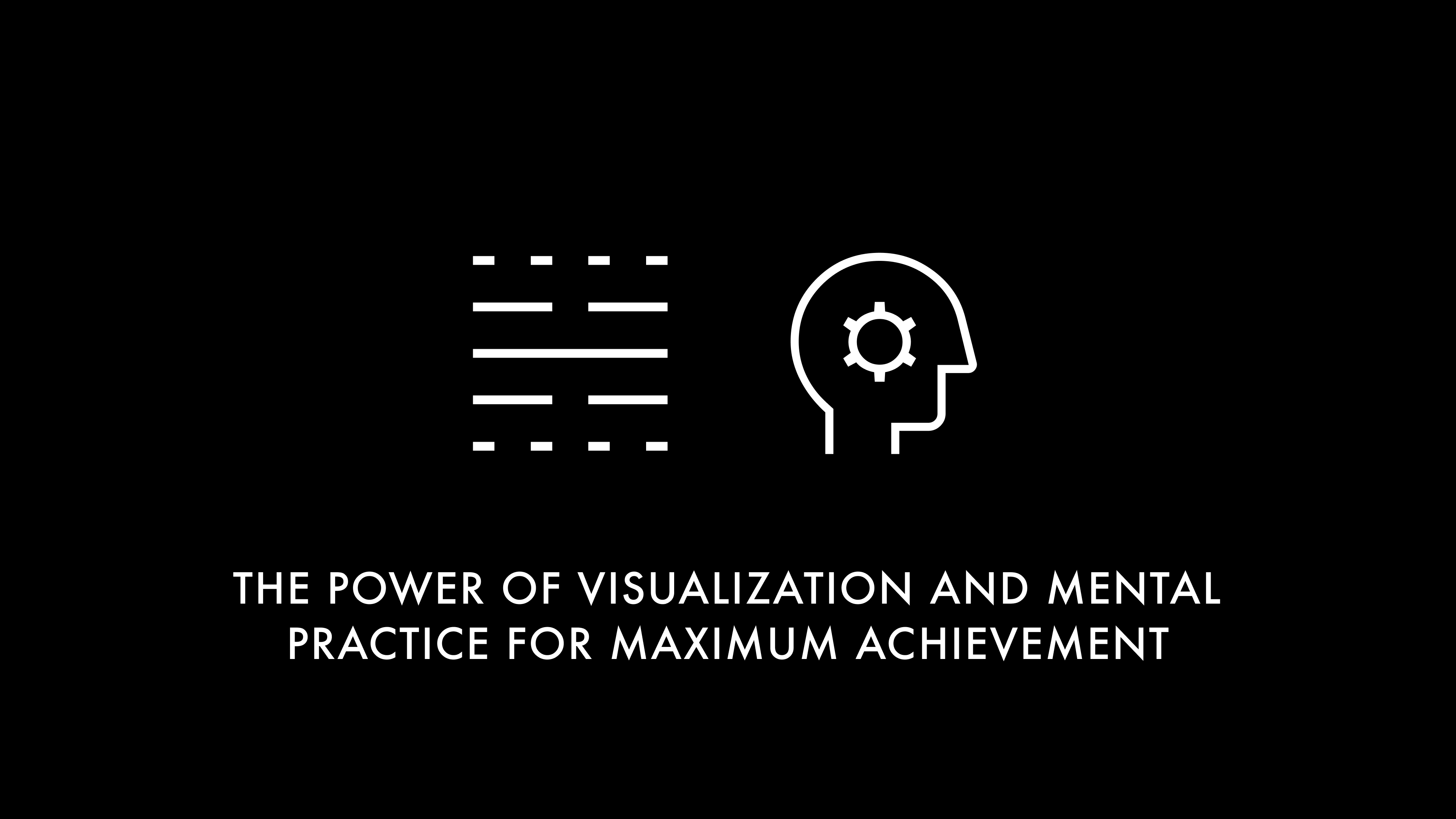If you’re looking for some feel-good, New Age fluff about visualization, stop reading right now. This article isn’t about sitting in a circle, chanting affirmations, or imagining yourself sitting on a beach while millions of dollars magically flow into your bank account.
What I’m talking about here is visualization and mental practice as strategic tools used by high performers—athletes, business owners, and anyone else who understands that results come from both mental preparation and execution. When used correctly, these tools can give you a competitive advantage, help you increase profits, and accelerate success in any area of life.
What Is Visualization, Really?
Visualization isn’t some mystical or magical process. It’s about creating a mental picture of a desired outcome, a specific action, or a goal. And the key word here is specific.
Think about it this way: In sports, top athletes use visualization to mentally rehearse a race, a game, or even a specific movement. They don’t just think about winning—they imagine every single detail of the process. They see themselves making the right moves, feel the tension in their muscles, and anticipate the challenges they’ll face along the way. They practice mentally before they ever step foot on the field or court.
You can do the same thing in business.
Here’s the harsh truth: If you’re not visualizing exactly how you will win—whether it’s a sales presentation, a negotiation, or a marketing campaign—you’re at a disadvantage. If you aren’t seeing success in your mind, you won’t see it in your bank account, either.
The Business Application of Visualization
Too many people in business treat success like a lottery ticket—they hope it will happen by chance. Winners, on the other hand, visualize success strategically. Before a big sales pitch, for example, they mentally practice the entire conversation, anticipate objections, and rehearse how they’ll overcome them. They visualize the prospect nodding in agreement, pulling out their wallet, and closing the deal.
Here’s a practical exercise: Before your next big presentation or pitch, take 10-15 minutes to mentally rehearse. See yourself walking in confidently, shaking hands, making your points clearly, and overcoming objections. Visualize the exact words you’ll use to close the deal. See the prospect signing the contract or making the purchase. The more specific and vivid your mental rehearsal, the better your actual performance will be.
Why Visualization Works
Now, I know what some of you are thinking: “Dan, this all sounds great, but does visualization really work?”
Absolutely, it does. And here’s why: The brain can’t distinguish between a vividly imagined experience and a real one. When you repeatedly visualize yourself performing an action successfully, you’re training your brain and body to perform that action as though you’ve already done it a hundred times.
Ever heard of the placebo effect? That’s the brain working based on belief. Similarly, when you mentally practice success, your brain is rewiring itself to believe in the outcome you’re visualizing. This increases your confidence, sharpens your focus, and improves your actual performance when the time comes to execute.
Athletes do it. Entrepreneurs do it. Millionaires do it. And if you’re smart, you’ll do it too.
Training for the Real World
Let’s take it one step further: mental practice is not just about visualizing success; it’s about mentally rehearsing the process.
If you’re an entrepreneur, it’s not enough to just visualize having a million-dollar business. You need to mentally walk through the steps it takes to get there—every challenge, every roadblock, every tough decision. You practice solving problems, handling crises, and staying calm under pressure.
When Michael Phelps was training for the Olympics, his coach would deliberately put obstacles in his path—like having his goggles fill with water mid-race—so he could mentally rehearse staying calm and finishing the race blind. When it happened in real life, Phelps had already “experienced” it so many times in his mind that he wasn’t phased.
This kind of mental preparation is critical for business owners, sales professionals, and marketers. Because, guess what? Something will go wrong. A client will say “no.” A deal will fall through. Your ad campaign will flop. Will you panic and fold? Or will you stay calm and execute, just like you rehearsed?
How to Start Using Visualization and Mental Practice Today
This isn’t rocket science, but it does require discipline. Here’s how to start using visualization to get better results in your business:
- Set clear, specific goals. Visualization only works when you’re focused on a clear target. Vague goals like “make more money” won’t cut it. What exactly do you want? A $10,000 deal closed? A 20% increase in revenue? The clearer, the better.
- Visualize the process, not just the outcome. Spend time mentally walking through the steps you’ll take to achieve your goal. This includes handling objections, overcoming obstacles, and dealing with unexpected challenges.
- Rehearse daily. Like any skill, visualization and mental practice improve with repetition. Take 10 minutes every day to mentally practice success—before your next meeting, call, or big decision.
- Prepare for adversity. Don’t just visualize everything going perfectly. Mentally rehearse how you’ll handle things when they go wrong. This will give you the confidence to stay cool under pressure.
The Winning Edge
Visualization and mental practice aren’t magic, but they are powerful tools in your success toolkit. Most people leave their success up to chance—they hope for the best but don’t actively prepare their minds for victory. If you’re serious about getting ahead, you need to think, plan, and prepare differently. Start by visualizing your success and mentally rehearsing the steps to achieve it. Do this consistently, and you’ll be amazed at the results.
You can either hope for success, or you can visualize and mentally practice it into existence. Which one do you think will get you where you want to be?

Leave a Reply